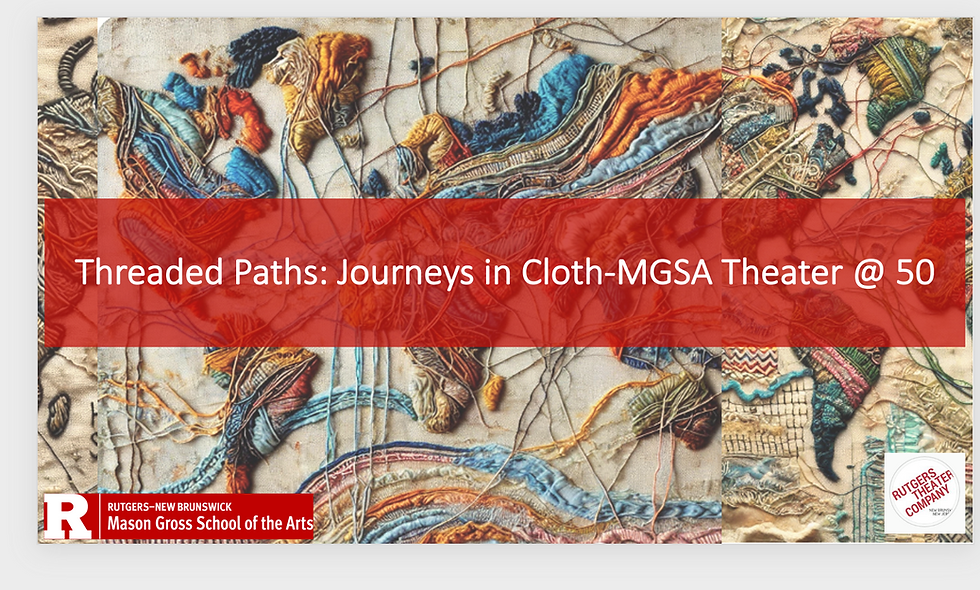Weaving Memories: Transforming Photo Mosaics into Textiles
- vmramshur
- Mar 5
- 3 min read

I am captivated by how images tell stories—not just through their subjects but through the textures, colors, and layers they hold. Lately, I’ve been exploring a process that bridges the visual with the tactile: transforming my photo mosaics into textiles.
A photo mosaic is a composition built from smaller photographs or fragments of a larger image, assembled to form something entirely new. Up close, each individual image stands out, holding its own history. But from a distance, they merge into a unified whole, revealing unexpected patterns, structures, and connections. It’s a way of seeing that mimics memory—how the details of our past blur and sharpen depending on perspective.
In my November 2024 blog post, Colors of Place – Palettes, Patterns, and Identities Across Cultures, I shared some of these mosaics, created by manipulating my photography digitally. Now, I’m taking the next step: translating these mosaics into fabric. But this isn’t just about printing images onto cloth. It’s about creating an interplay between the visual and the physical, where textures of landscapes, cityscapes, architectural elements, and material objects shift and reform into something tangible. The result is a layered experience—one that invites touch, reflection, and a sense of connection between past and present, image and object.
This process excites me because it feels like an extension of storytelling. Just as threads weave together to form fabric, these smaller moments come together to create something larger than the sum of their parts. And like any good story, the meaning shifts depending on how you engage with it.
I’ve been thinking a lot about artists who have explored photographic collage and the way images interact with memory, identity, and materiality. David Hockney’s "joiners" reassemble fragments of a scene into multi-perspective compositions, much like how my mosaics layer moments together (Hockney, 1984). Romare Bearden’s photomontages, rich in cultural storytelling, inspire me to think about how different visual elements can come together to tell new narratives (Fine, 1991). Hannah Höch’s Dadaist photomontages challenge conventional perspectives, subverting traditional image-making with radical compositions (Lavin, 1993). Laszlo Moholy-Nagy’s experimental work with layering and abstraction opens up new ways of seeing form and space (Moholy-Nagy, 1947). Each of these artists has influenced my approach to reconfiguring images—breaking them apart, reassembling them, and ultimately transforming them into something new.
As I continue to experiment, I find myself drawn to deeper questions: How can fabric hold memory? How do images transform when they become something we can touch, fold, or even wear? These are the ideas guiding my exploration, and I look forward to sharing more soon.
For now, I’ll be stitching stories—one fragment at a time. Stay tuned what comes next with these textiles and others.
Val
Photos:
Top: Burano Photo Mosaic to be printed on velvet.
Middle 1: Dubrovnik, Croatia Printed on various weights of cotton canvas and linens
Middle 2 : Bodrum Peninsula, Muğla Province,Tũrkye printed on various weights of linens.
Bottom: Istanbul, Tũrkye Printed on cotton canvas
Custom Fabric Printing Resources:
Spoonflower: https://www.spoonflower.com/
Contrado: https://www.contrado.com/
References:
Fine, R. (1991). The Art of Romare Bearden: The Prevalence of Ritual. National Gallery of Art.
Hockney, D. (1984). Cameraworks. Alfred A. Knopf.
Lavin, M. (1993). Cut with the Kitchen Knife: The Weimar Photomontages of Hannah Höch. Yale University Press.
Moholy-Nagy, L. (1947). Vision in Motion. Paul Theobald.



















This is stunning!